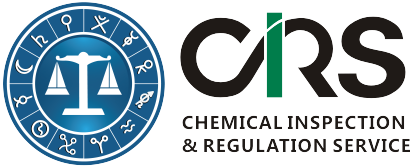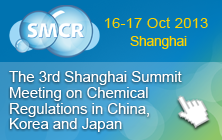REACH Authorization 2013
Updated in April 2013
Under REACH Substances of Very High Concern(SVHC) listed in Annex XIV ("Authorization list") will not be allowed to be used, placed on the market or imported into the EU after a date to be set unless the company is granted an authorization.
NEW
19 April 2013, 8 substances are added onto Annex XIV. There are 22 substances on the authorization list (updated in April 2013). The full list can be found here.
The REACH Regulation requires that ECHA identifies from the "Candidate List" priority substances to be included in Annex XIV of REACH (the "Authorisation List") and recommends Annex XIV entries (i.e. transitional arrangements and, where relevant, exemptions and review periods) for these substances to the European Commission, taking into account the opinion of the Member State Committee. Interested parties are then invited to submit comments during this process. At the end of the prioritisation process, the following decisions can be made:
- whether or not the substance requires Authorization;
- which specified uses of the substances will not need Authorization (e.g. because it may be possible that sufficient controls established by other legislation are already in place);
- regarding the final date where a substance can no longer be used without Authorization, also known as ‘Sunset Date.’
To follow the latest updates about the update of SVHC candidate list or SVHC authorization list from CIRS, please subscribe our monthly newsletter:
Applications for Authorization
Authorization applications need to be made within the set deadlines for each use that is not exempted from the Authorization requirement. They are required to include:
- a chemical safety report which assesses the risks related to those properties that caused the substance to be included in Authorization system (unless already submitted as part of the registration)
- a study of possible alternative substances or technologies that could be used including, information on research and development foreseen or already in progress to develop such alternatives.
If this study of alternatives reveals that there is a suitable alternative that can be used then applicants must submit a ‘substitution plan’. This plan must explain how the applicant intends to replace the substance. The suitability of this plan is then examined, including whether the alternative does actually reduce overall risks and if it is actually technically or economically possible.
An applicant should also include a socio-economic analysis in the application to demonstrate further investigation. An application fee must to be paid for each application. For all applications, the Agency will provide expert opinions. The applicant can reply and give comment on these opinions.
Authorization Approval
Authorizations will be granted if the applicant can show that the risk from the use of the substance is sufficiently controlled. The “adequate control route” does not apply for substances for which it is not possible to determine thresholds and substances with PBT or vPvB properties.
Even if the risk is not sufficiently controlled, an application could still be authorized if it is proven that the socio-economic benefits are greater than the risks and there are currently no suitable alternative substances or technologies
In a supply chain, downstream users may only use such substances for uses which have been authorized. For this they must either,
- obtain the substance from a company that was originally granted an authorization for that use. They must stay within the terms and conditions of that authorization. Such downstream users must notify the Agency that they are using an authorized substance.
- apply themselves for authorizations for their own uses.
This can be viewed as a fair process as it involves interested parties at key stages while also ensuring that reviews of authorized applications will take place thereafter.
This is obviously dependent on the particular substance as some can pose more of a risk than others.
This process reaffirms ECHA’s commitment as an agency to carry out its obligations under REACH and in turn to safeguard the environment and people who live within it.
About Us
Chemical Inspection and Regulation Service(CIRS) is a leading provider of hazardous substances testing and chemical regulatory consulting services with a strong focus on chemical compliance.
CIRS's testing lab located in mainland China has acquired the qualifications of China National Accreditation Service for Conformity Assessment (CNAS) and CMA and follows the ISO/IEC 17025.
For inquiries, please contact:
- Chemical Inspection & Regulation Service Ltd(CIRS Ireland)
Unit 1 Ardee Business Park, Hale Street, Ardee, Co. Louth, Ireland
Tel : +353 41 9806 916 | Fax: +353 41 9806 999
Email: service@cirs-reach.com
- Hangzhou CIRS Co. Ltd(CIRS China)
11F Building 1, Dongguan Hi-Tech Park, 1288 Chunbo Road, Binjiang District, Hangzhou 310052, China
Tel: +86-571 8720 6555 | Fax: +86-571 8720 6533
Email: service@cirs-reach.com
For REACH supply chain communications & complaints, please contact Ms Alice Qian(Email: info@cirs-reach.com)


